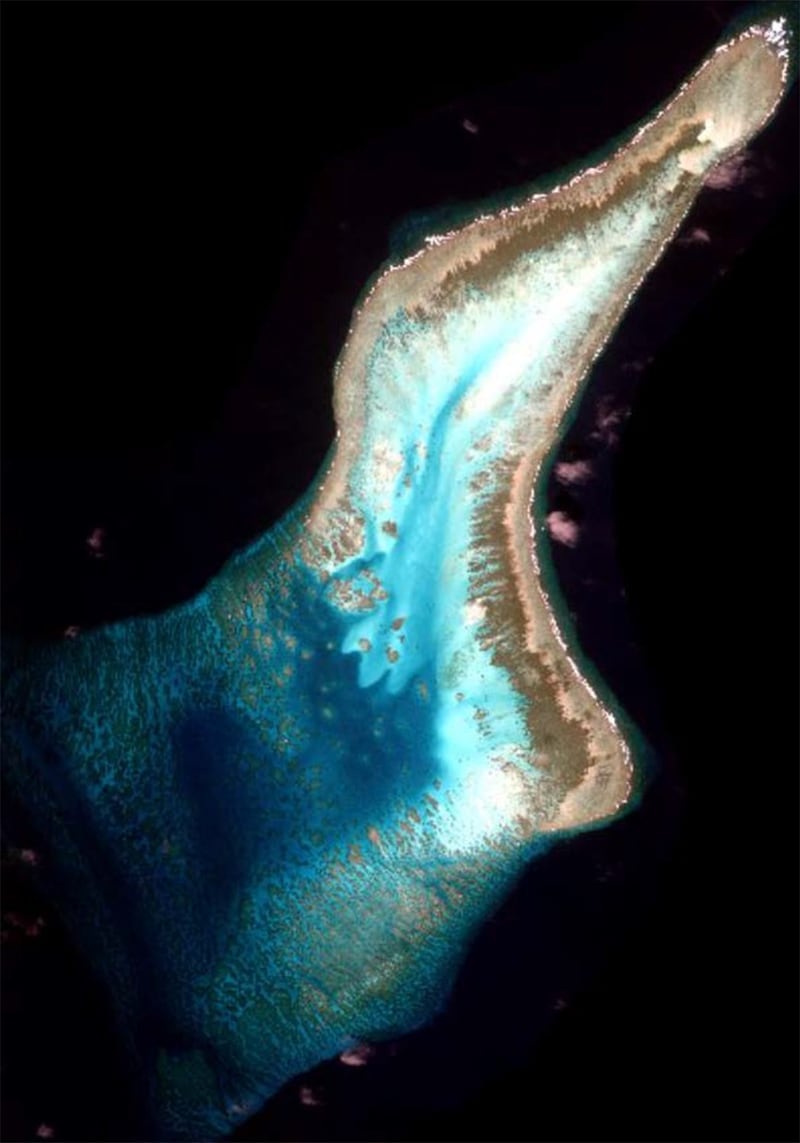UPDATED AT 5:29 p.m. ET ON 12-21-2022
China has dismissed a report that Beijing has been developing at least four unoccupied features in the South China Sea. Some U.S. experts have also casted doubt on the claims.
A Bloomberg News report on Tuesday quoted unnamed Western officials as saying China is building up several unoccupied land features including Eldad Reef, Lankiam Cay, Whitsun Reef and Sandy Cay, all in the Spratly archipelago, also claimed by the Philippines, Vietnam and Taiwan.
China rejected the news, with the South China Sea Probing Initiative (SCSPI) think tank calling it “100% fake news.”
During a press briefing in Beijing on Wednesday, a spokeswoman for the Chinese Ministry of Foreign Affairs rejected Bloomberg's report as "completely untrue."
“Refraining from action on the presently uninhabited islands and reefs of the Nansha Islands is a serious common understanding reached by China and ASEAN countries in the Declaration on the Conduct of Parties in the South China Sea (DOC), and China always strictly abides by it,” Mao Ning said in response to a reporter’s question. China refers to the Spratlys as the Nansha islands.
However, the Philippines said Tuesday it had asked government agencies to investigate the report.
"We are seriously concerned as such activities contravene the Declaration of Conduct on the South China Sea's undertaking on self-restraint and the 2016 Arbitral Award," the Department of Foreign Affairs said, according to local media.
Beijing has already developed several artificial islands in the disputed South China Sea and fully militarized at least three of them with airfields, radars and hangars, but this new revelation may be “the first known instances of a nation doing so on territory it doesn’t already occupy,” reported Bloomberg.
The officials, who asked not to be identified so they could discuss sensitive information, told the news agency that “some sandbars and other formations in the area expanded more than ten times in size in recent years.”
The previously submerged features have now been exposed and reinforced to “sit permanently above the high-tide line,” according to the officials.
If true, this would be a major step towards changing the status quo in the South China Sea by Beijing, which claims “historical rights” to almost 90% of the sea as well as the islands and other land features inside it.
Brunei, Malaysia, the Philippines, Vietnam and Taiwan also claim parts of the resource-rich sea.
Land formations
A UN tribunal in 2016 ruled that China’s claims in the South China Sea have no legal basis but Beijing has so far rejected the ruling.
China has developed at least seven artificial islands in the South China Sea, creating 3,200 acres (1,295 hectares) of new land since 2013, according to the Asia Maritime Transparency Initiative (AMTI) at the Washington-based Center for Strategic and International Studies.
U.S. Indo-Pacific commander Adm. John C. Aquilino said in March that three of them - Mischief Reef, Subi Reef and Fiery Cross – appeared to be fully militarized and equipped with missile systems and fighter jets.
The AMTI, which keeps a close eye on developments in the South China Sea, has yet to report on any new activities by China.
“China has not occupied a new feature since December 1994 and has not built up anything it didn't already occupy,” said AMTI director Greg Poling.
Poling said “commercial imagery cannot corroborate” the claims made in the Bloomberg report.
“All I can say for sure is that the sandbars at those four features have shifted over time but have on average been the same size. If there is evidence of construction, it must be very subtle and it must not be visible in commercial satellite imagery,” he told RFA.
Another expert, Taylor Fravel at the Massachusetts Institute of Technology, pointed out that landforms appear and disappear in the South China Sea.
A report on Eldad Reef by the Center for International Law at the National University of Singapore (NUS) said "sand banks are dynamic and change location, size and shape under the combined effect of astronomic tides, storm surges and wind-waves."

Dredging marks
Eldad Reef is a coral reef platform located at Tizard Bank in the northwestern part of the Spratly Islands.
China calls it Anda Jiao and Chinese vessels have reportedly been carrying out some dredging at the reef since 2014, as well as harvesting endangered giant clams, according to Philippine media which call it Malvar Reef.
The report by the NUS also said “dredging marks are visible on several sandy parts of the reef, totalling a surface area of 1.35 square meters [14.53 square feet].”
It is understood there has not been a large-scale reclamation of, or a man-made structure on, Eldad. The unoccupied reef is claimed by China, the Philippines, Taiwan, and Vietnam which calls it Da En Dat.
The Beijing-based SCSPI, responding to the Bloomberg report, said there are "no signs of land reclamation on Lankiam Cay, Eldad Reef and Whitsun Reef."
Whitsun Reef, known as Julian Felipe Reef in the Phillipines, lies inside the Philippines exclusive economic zone, about 175 nautical miles (324 kilometres) west of the country.
Hundreds of Chinese vessels were “persistently swarming” the waters around the reef in March and April this year, prompting Manila to lodge several diplomatic protests.
Increased tensions in the South China Sea also led to another claimant, Vietnam, building up its outposts. Hanoi has created 520 acres (210 hectares) of new land in the Spratlys in the last ten years, 80% of which were reclaimed in 2022 alone, according to AMTI.
Vietnam’s total reclamation area to date is still less than 20% of China’s.
This story has been updated to include the reactions of the Chinese and Philippine governments.
